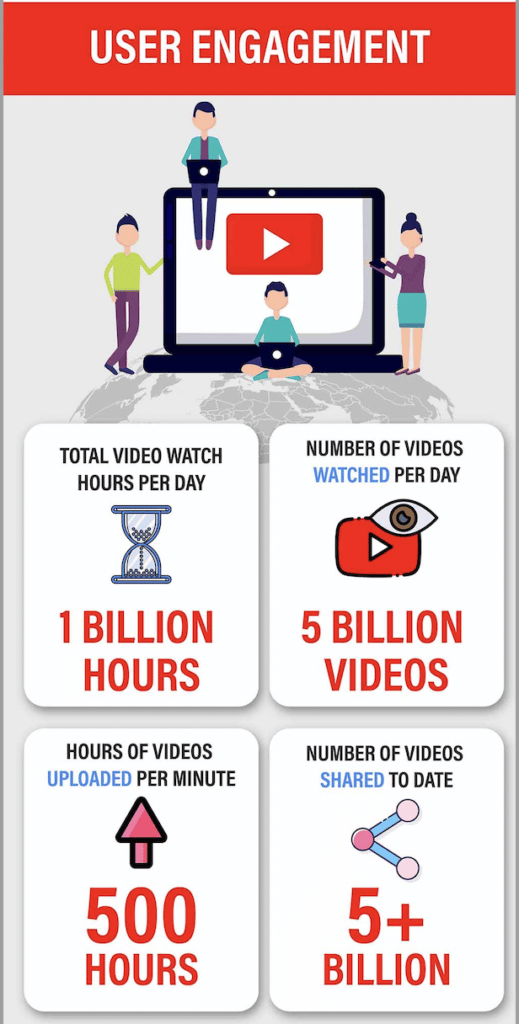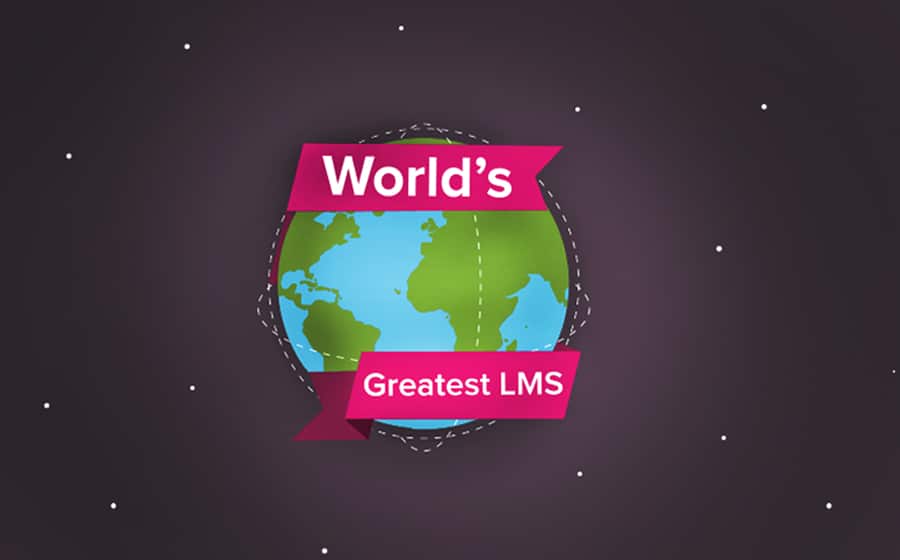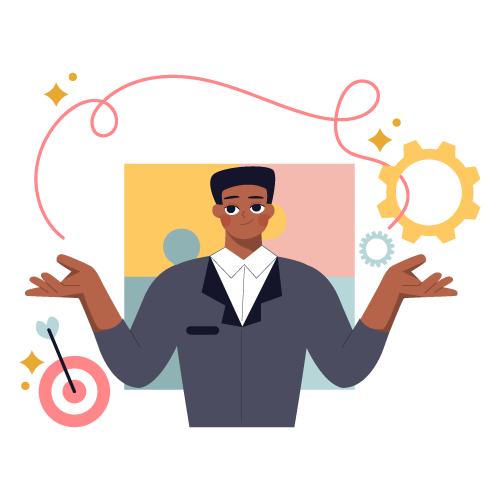YouTube and its over 2.6 billion users engage in 1 billion hours of video content across the world everyday. 62% of users access the platform every day in the US and more than 1/4 of the world’s population use YouTube on a monthly basis. It’s colossal and it’s growing.
Ever wondered why? It’s in the vid, the tape, the reel – whatever you want to call it – but content-wise it just works. People love watching video, they love learning through video and they love it for entertainment.
Video grabs and keeps people’s attention, they strike a deep connection with the content and it evokes an emotional response as it is so descriptive of the message. They say people are 1200% more engaged by video than other mediums. It is cognitively easier to process information presented to the brain in picture format than in any other format, and our brains love that about video. Worldwide, 100 countries have localized versions of YouTube and it is available in over 80 languages.

Why would you say YouTube is the same as an LMS platform?
There are many reasons why an LMS platform is similar to YouTube. LMS uses video a lot due to its highly engaging nature, but it is the way they both use this sought after medium that brings the comparison into question.
YouTube fills a gap
YouTube ‘how to’ videos are certainly the most epic learning tools of the noughties and tweenies. Stuck on a task with a tight deadline and no idea how to complete it? For sure, a quick search is all it takes to find the right YouTube video for you. Everybody loves making them and everybody loves using them. YouTube is an organic and need-driven LMS for all those skills you suddenly don’t have when you need them. Any good LMS offers Just-in-time training which is formal education’s answer to YouTube ‘how to’ videos. This is where an employee stuck on the job can watch a short clip and upskill on their mobile phone.
YouTube is topical
When you type in “funny cat videos” in the YouTube search engine, you know you’ll get a bevy of feline antics to keep you entertained for hours. If you typed in “funny cat videos” and you had to sort through thousands of product reviews and beauty tutorials, you’d become a little disenchanted with the system. The same goes for your LMS: It must be impeccably organized and offer the ability for learners to search by topic.
YouTube doesn’t just give media-hungry viewers what they’re looking for; YouTube also introduces viewers to things they might be interested in. You’re looking for funny cat videos? Here’s a compilation of hilarious pets. You’re trying to learn how to build a coffee table? Here’s a video product review for a popular wood stain. In doing so, YouTube ensures that visitors stay on the site and won’t navigate away.
LMS operates in the same way. Rather than users finding the one thing they’re looking for and then closing the window, the LMS suggests other links to videos and manuals that may be of interest. Your learner just took an e-course on better sales tactics? Here’s a checklist for closing a sale, or a sales environment simulation.
YouTube is quick and adaptive
Believe it or not, YouTube is also a form of microlearning. You might be looking up a cooking video or checking out the latest celeb news, but you’re learning in short blocks of video every time you log on. An LMS offers the same features so learners stick around and participate in autonomous learning. Instead of sitting through 30 minutes of lessons, a user can navigate to the information he or she needs and pick up new information in less than five minutes.
Taking a page from the YouTube personalized playbook, your LMS can also adapt to the learner.
If a more advanced employee is stuck taking the same courses as a new hire, he or she will lose interest (and you can kiss any engagement goodbye). YouTube doesn’t just keep pushing unwanted videos at the viewer: Instead, the search engine adapts to personal preferences by using watched media as a guide. Now that an LMS is able to do the same, learners are much more engaged.
Unless you build and code it yourself, you can’t expect your LMS to be perfect. You can, however, carefully vet available systems to make sure you choose one that works for your learners. Take it from YouTube (and its billion plus users): A smart, personalized experience wins every time.
LMS and video
Video is used extensively for eLearning. What is interesting is that using video in eLearning actually stimulates discussion and better collaboration. Collaboration and social-learning are one of the backbones of eLearning, so video ties in as a perfectly paired medium for content delivery and to enable heightened learning.
Some tips for using video in eLearning are:
- Keep them short: Don’t let the learner get bored
- Keep them interactive: Ask for feedback, throw in a quizz
- Use transcripts: Accessibility is important
- Pay attention to files sizes: Long download times frustrate learners
- Use video for scenarios and stimulation: Video creates great immersive situations – how to do things, what to do
Never stop learning
They say we “Never stop learning, because life never stops teaching” and this is something we must embrace. As LMS fiends and eLearning enthusiasts, we can learn a great deal from YouTube’s climb to success and its ability to maintain this stronghold. Understanding human nature and how people operate is vital. Instead of trying to push our own agendas, we should rather put our audiences’ needs and wants at the forefront of what we do. This is a sure path to success, one YouTube has surely followed and they forward for any LMS.






